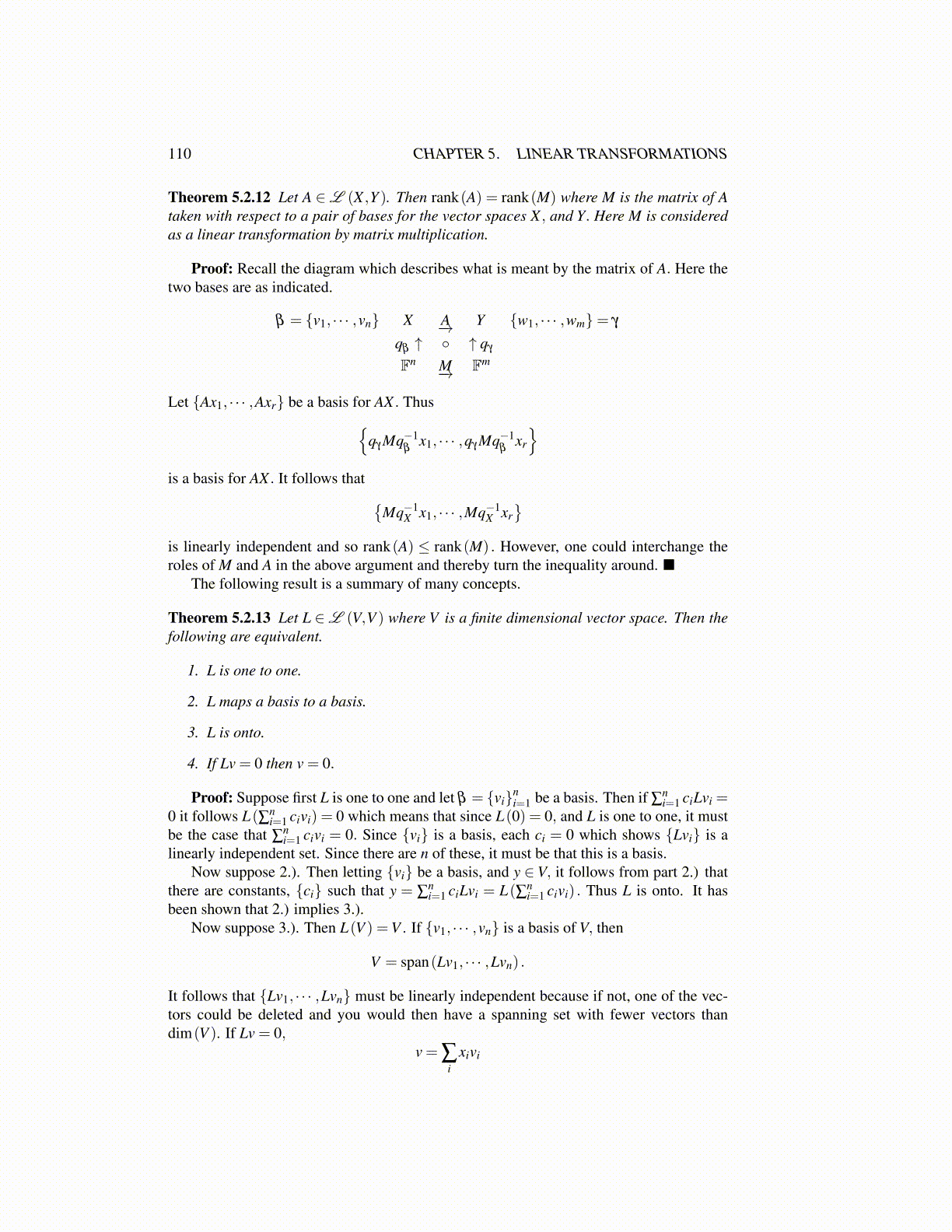
110 CHAPTER 5. LINEAR TRANSFORMATIONS
Theorem 5.2.12 Let A ∈L (X ,Y ). Then rank(A) = rank(M) where M is the matrix of Ataken with respect to a pair of bases for the vector spaces X , and Y. Here M is consideredas a linear transformation by matrix multiplication.
Proof: Recall the diagram which describes what is meant by the matrix of A. Here thetwo bases are as indicated.
β = {v1, · · · ,vn} X A−→ Y {w1, · · · ,wm}= γ
qβ ↑ ◦ ↑ qγ
Fn M−→ Fm
Let {Ax1, · · · ,Axr} be a basis for AX . Thus{qγ Mq−1
βx1, · · · ,qγ Mq−1
βxr
}is a basis for AX . It follows that {
Mq−1X x1, · · · ,Mq−1
X xr}
is linearly independent and so rank(A) ≤ rank(M) . However, one could interchange theroles of M and A in the above argument and thereby turn the inequality around. ■
The following result is a summary of many concepts.
Theorem 5.2.13 Let L ∈L (V,V ) where V is a finite dimensional vector space. Then thefollowing are equivalent.
1. L is one to one.
2. L maps a basis to a basis.
3. L is onto.
4. If Lv = 0 then v = 0.
Proof: Suppose first L is one to one and let β = {vi}ni=1 be a basis. Then if ∑
ni=1 ciLvi =
0 it follows L(∑ni=1 civi) = 0 which means that since L(0) = 0, and L is one to one, it must
be the case that ∑ni=1 civi = 0. Since {vi} is a basis, each ci = 0 which shows {Lvi} is a
linearly independent set. Since there are n of these, it must be that this is a basis.Now suppose 2.). Then letting {vi} be a basis, and y ∈ V, it follows from part 2.) that
there are constants, {ci} such that y = ∑ni=1 ciLvi = L(∑n
i=1 civi) . Thus L is onto. It hasbeen shown that 2.) implies 3.).
Now suppose 3.). Then L(V ) =V . If {v1, · · · ,vn} is a basis of V, then
V = span(Lv1, · · · ,Lvn) .
It follows that {Lv1, · · · ,Lvn} must be linearly independent because if not, one of the vec-tors could be deleted and you would then have a spanning set with fewer vectors thandim(V ). If Lv = 0,
v = ∑i
xivi